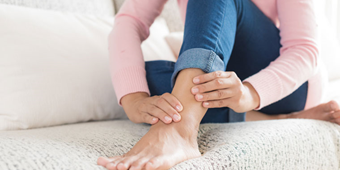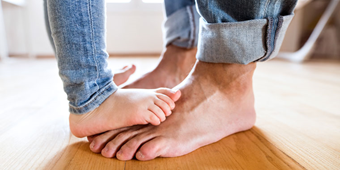Varicose Veins Can Be Very Frustrating

Find Your Perfect Match
Answer a few questions and we'll provide you with a list of primary care providers that best fit your needs.
Ever feel so excited to go swimming … but less than excited to put the veins on your legs on full display in a swimsuit? If so, you’re not alone.
Varicose veins are a common part of getting older, especially if you have a family history of them.
“Women who have more than one pregnancy, or even just one pregnancy
are at a higher risk of having varicose veins because of the changes that happen to our bodies with pregnancy,” says Laura Peterson, MD.
“Some other factors that you can control would be maintaining a normal weight, but those other factors, age, pregnancies, and genetics really play a bigger portion as to what affect you getting a varicose vein or varicose vein symptoms.”
Varicose veins can appear in a range of sizes.
The tiny varicose veins are the ones we often know as “spider veins.” These veins usually only affect the appearance of your skin on your legs.
Large varicose veins are thicker and more rope-like. And there are varicose veins in between, called reticular veins.
“It’s a spectrum of how big the vein is and what kind of problems you can have because of it,” Dr. Peterson says.
Varicose veins aren’t generally dangerous to your health. However, they can be a hit to your quality of life if you dislike the way they look and make you feel self-conscious.
Dr. Laura Peterson explains the types of varicose veins, how to reduce your risk for developing them, and how they’re treated.
Click play to watch the video or read video transcript.
Treating Varicose Veins
Unfortunately, you can’t completely prevent varicose veins. But you can reduce your risk.
“Being active, living a healthy lifestyle, and trying to keep your weight in a normal range are the critical factors that you have in preventing varicose veins that you can control,” Dr. Peterson says.
It’s important to talk to your primary care provider to be referred to a vein specialist like Dr. Peterson before deciding how you want to treat varicose veins.
If you’re looking to control symptoms, such as pain or discomfort, your provider might recommend compression hose therapy. Other options include over-the-counter and prescription medications.
“Also, we can do office-based procedures, including injections that can help take care of some more minor cosmetic issues,” Dr. Peterson says.
Surgical options also are available, she says, including options using both minimally invasive techniques and traditional open surgery.
“If you just don’t like how things look or feel like things could be a little bit better, that’s certainly a reason to ask to seek help and treatment,” Dr. Peterson says. “Ignoring it isn’t going to make it go away.”
Find Your Perfect Match
Answer a few questions and we'll provide you with a list of primary care providers that best fit your needs.
Source: Laura Peterson, MD, Premier Vascular Surgeons





